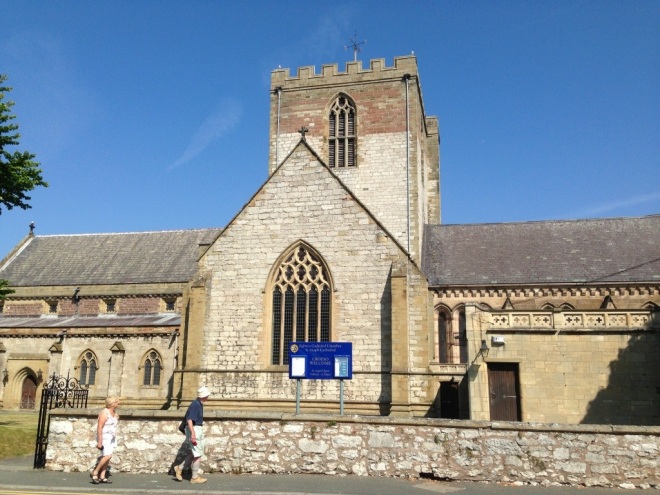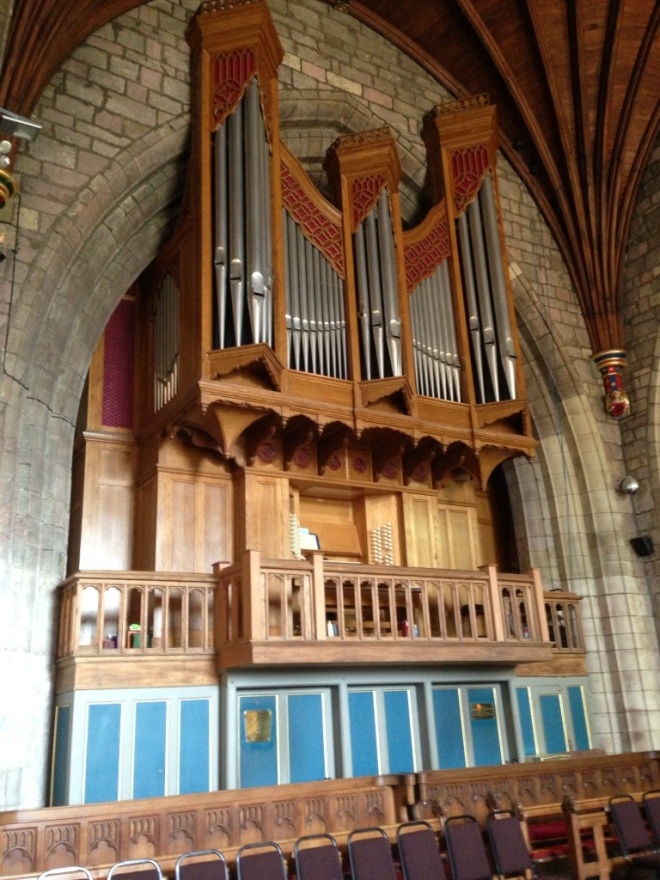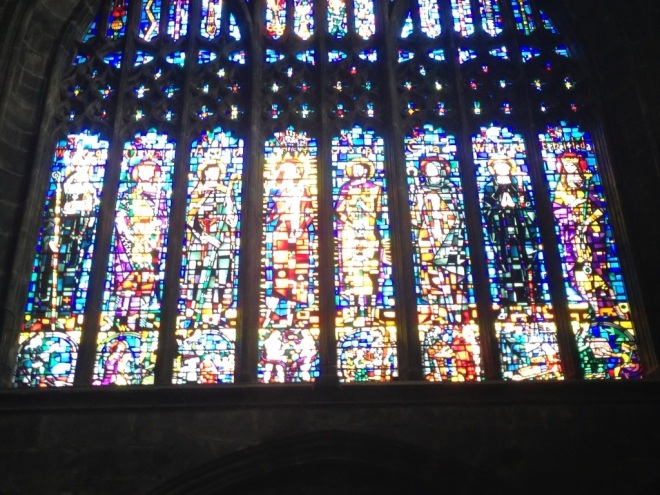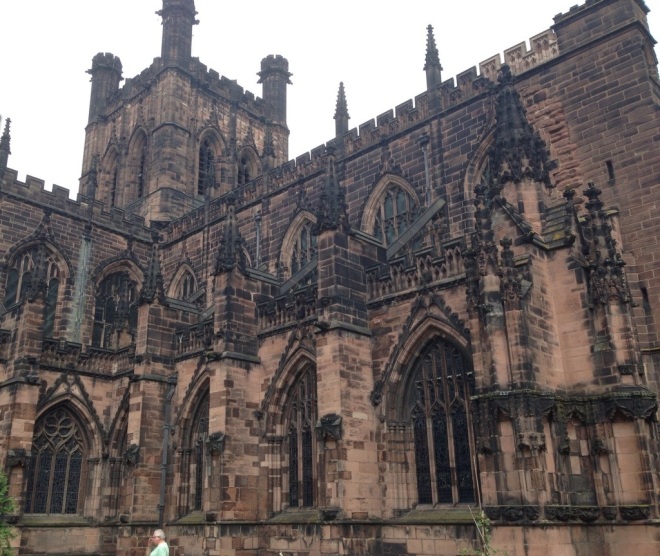Cathedrals
Cathedrals – churches – abbeys . . . The landscape is dotted with the evidence of faith through the ages. In Wales, one finds many words, towns, and place names beginning with the term ‘llan.’ It has come to mean a ‘place with a church’ or a ‘place of a saint.’ Thus Llandudno means the place with the church of St. Tudno.
Having a church or an abbey or a cathedral was important for a community. If that place actually had the relics of the saint involved, all the better. It would become a place of pilgrimage. And pilgrimages were both good for the soul and for the local economy! Being a site of pilgrimage meant people came to your place and while there they needed housing and food. Thus, traditionally, pride was taken in the preservation and promotion of one’s saint and the particular church or cathedral.
Of course, things have changed over the past thousands of years . . . still, I have found, especially in this area, that, frankly, though there don’t seem to be a lot of people attendingchurch, there is still a sense of pride in the church itself.
The Church of St. Asaph is one such place. Small by cathedral standards, it is incredibly well cared for.
And I even had got to hear the organ played! Dave and Fay would have loved it!
Yesterday, I got back to the Chester Cathedral. It is dedicated to St. Werburgha, 7th century woman, born to royalty who gave it all up to become a nun.
.
.

She lived a long and dedicated life and, after her death, was declared a saint. Eventually, to protect her relics from invading armies, they were moved to Chester where a church was built and where they were protected and honored (and provided a great place of pilgrimage). The Cathedral we see today was constructed between 1092 and 1220 on the site of this church. It originally served as a Benedictine Abbey and was raised to cathedral status in the 16th century.
I was struck with how well cared for the place continues to be. It is truly a refreshing place to visit.
This is the nave of the church.
This is the nave of the church.
And the West Window:
I continue to marvel at the incredible craftsmanship – and faith – so evident in these buildings. This poem by Welsh poet John Ormand made me smile. I share it with you as well as a final picture of the Chester Cathedral.
Cathedral Builders
They climbed on sketchy ladders toward God,
With winch and pulley hoisted hewn rock into heaven,
Inhabited sky with hammers, defied gravity,
Deified stone, took up God’s house to meet Him,
With winch and pulley hoisted hewn rock into heaven,
Inhabited sky with hammers, defied gravity,
Deified stone, took up God’s house to meet Him,
And came down to their suppers and small beer;
Every night slept, lay with their smelly wives,
Quarrelled and cuffed the children, lied,
Spat, sang, were happy or unhappy,
Every night slept, lay with their smelly wives,
Quarrelled and cuffed the children, lied,
Spat, sang, were happy or unhappy,
And every day took to the ladders again;
Impeded the rights of way of another summer’s
Swallows, grew greyer, shakier, became less inclined
To fix a neighbour’s roof of a fine evening,
Impeded the rights of way of another summer’s
Swallows, grew greyer, shakier, became less inclined
To fix a neighbour’s roof of a fine evening,
Saw naves sprout arches, clerestories soar,
Cursed the loud fancy glaziers for their luck,
Somehow escaped the plague, got rheumatism,
Decided it was time to give it up,
Cursed the loud fancy glaziers for their luck,
Somehow escaped the plague, got rheumatism,
Decided it was time to give it up,
To leave the spire to others; stood in the crowd
Well back from the vestments at the consecration,
Envied the fat bishop his warm boots,
Cocked up a squint eye and said, ‘I bloody did that.’
Well back from the vestments at the consecration,
Envied the fat bishop his warm boots,
Cocked up a squint eye and said, ‘I bloody did that.’
- John Ormond (1923-1990)
Welsh poet and film-maker
Welsh poet and film-maker





No comments:
Post a Comment